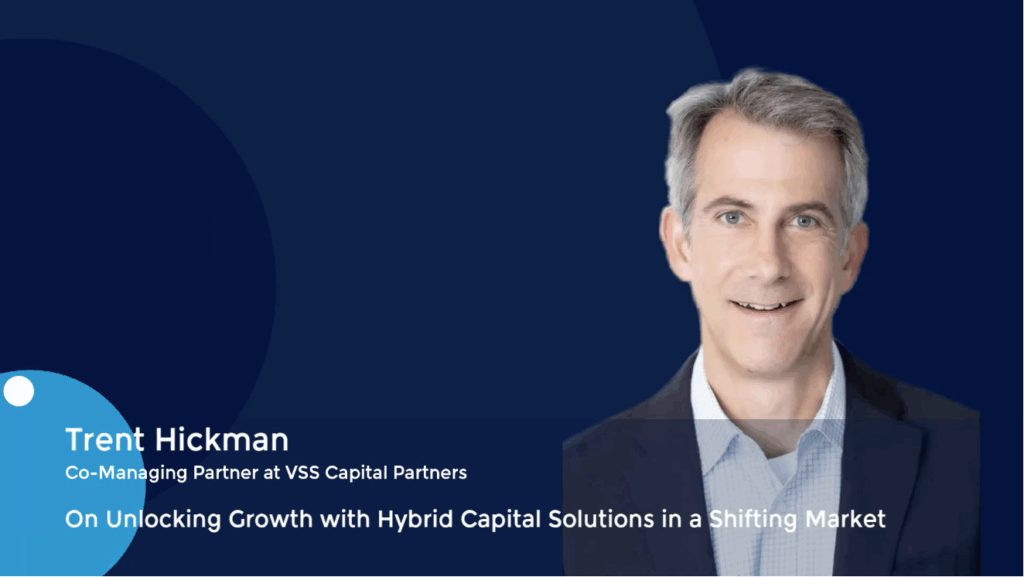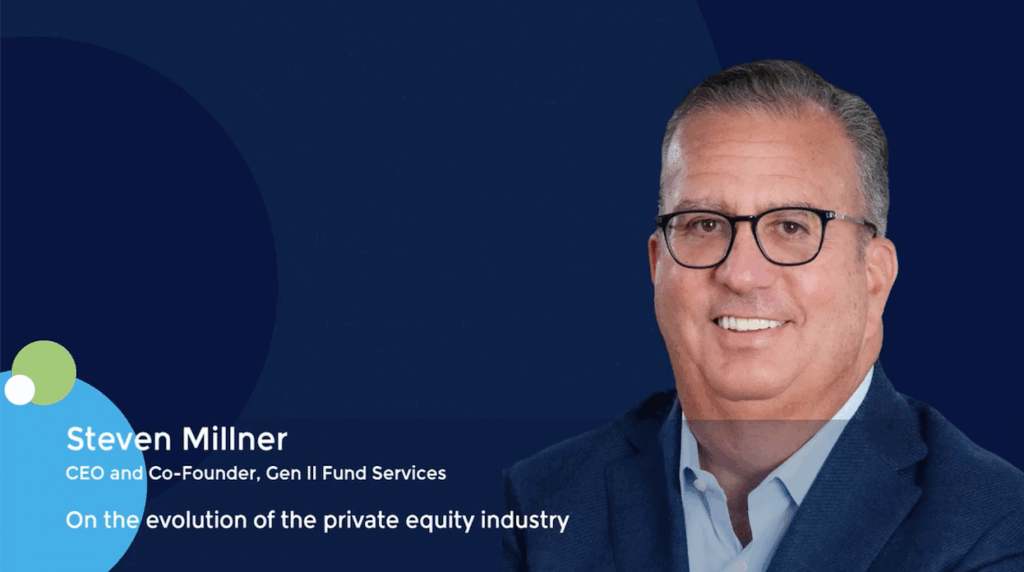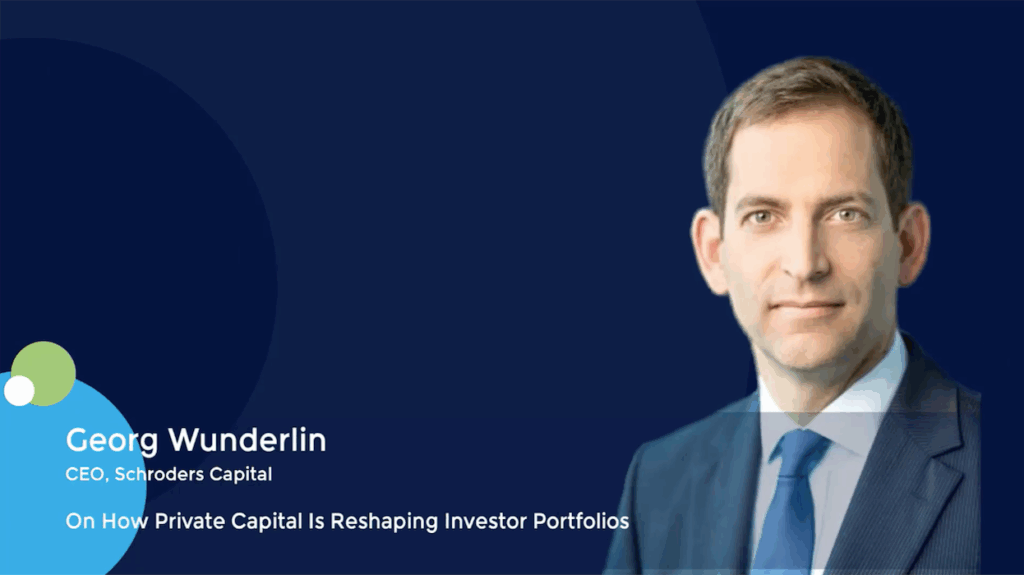Australia PE fundraising: How LP bases are evolving
Australian private equity firms are increasingly turning to offshore institutions and domestic private wealth platforms as superannuation funds retreat from the middle market
Edward Caser learned the low-tech way Australian family offices source and track private equity investments while running a tax reporting business. He formed Luna Partners in September 2022 to drive digitalisation. Working with wealth management software provider GBST, Luna built a cloud-based platform that covers everything from onboarding to subscriptions to reporting.
This technology solution was one part of the plan. Having established a network of high net worth individual (HNWI) and family office customers, Luna started offering them access to private equity funds that typically have prohibitively high minimum cheque sizes. It would aggregate commitments starting from AUD 100,000, using the technology platform to scale the operation.
Anchorage Capital Partners, which owns GBST, became the test case. The Australian turnaround investor launched its fourth fund around the same time Caser established Luna. A final close of AUD 505m (USD 327m) – just above target – came in November 2023. Luna was expected to contribute no more than AUD 15m, but it corralled around 50 investors to put in several times that amount.
“Anchorage was confident it could backfill any gap I left, but as we approached our final close, more people were spurred into action. There were also a lot of referrals from people who placed investments and experienced our technology,” said Caser. “The last two weeks were crazy.”
Luna is looking to feed more of what it sees as unsated local demand for local private equity with an allocation to Pacific Equity Partners’ sixth fund, which is targeting AUD 3bn. The firm’s early traction reflects a broader mobilisation of Australian wealth into alternatives that is increasingly drawing global managers to the country to market comingled funds and evergreen products.
For Australia’s middle-market managers, private wealth represents a further opportunity to broaden LP bases that have become progressively international with each vintage as domestic institutional investors hold back. They already have some direct support from HNWIs and family offices, but most expect aggregation by wealth management platforms to grow in prominence across the industry.
“Wealth management platforms and family offices are increasingly interested in private equity and there is now more choice in terms of funds and a lot of intermediaries are active in the space,” said Jeremy Samuel, a founder and managing director at Anacacia Capital.
“Advisors have a critical role to play in ensuring alternative assets aimed at the sophisticated investor end of the market have a good match between risk appetite, return expectations, and liquidity constraints.”
Global mindsets
The evolution of investor bases has been happening for several years as some superannuation funds have exited from the middle market. Either their programmes were becoming larger and more international, or they were withdrawing from the asset class due to fee concerns.
This has been accelerated by consolidation within the superannuation fund industry. Total superannuation assets amounted to AUD 3.6trn as of June 2023, of which AUD 2.5trn was held by regulated entities, according to the Australian Prudential Regulatory Authority (APRA).
M&A has resulted in the 12 largest industry, public sector, and retail super funds accounting for three-quarters of the regulated asset base. Each of the 12 has over AUD 75bn in assets under management (AUM). Four have crossed the AUD 150bn threshold: AustralianSuper, Commonwealth Superannuation Corporation (CSC), Australian Retirement Trust (ART), and Aware Super.
Once into the long tail of super funds, internal investment teams become smaller and the need to maintain liquidity to address potential withdrawals begins to bite. Consequently, appetite for illiquid asset classes like private equity quickly diminishes.
Meanwhile, regulatory reforms that arguably encourage super funds to prioritise fees over performance – private equity might account for 5% of the portfolio but half of the overall management expense ratio (MER) budget – have altered modes of engagement.
“You discuss fees before you discuss strategy or returns, so they are very hard to get on board unless you agree to material discounts,” said one Australia-based investor relations professional. He added that super funds have declined to re-up in his firm’s funds because outperformance in the previous vintage led to a significant carried interest payment, which “blew through the fee budget.”
This tallies with an account from another middle-market manager of super funds selling fund interests on the secondary market at meaningful discounts to net asset value after learning that strong returns would push up the carried interest portion of fees. The rationale was that, by selling the position, the return would be classified as a capital gain and not appear in the MER.
Asked about their commitment to Australian private equity, super funds make two observations. First, the country accounts for about 2% of global GDP, so it is difficult to justify backing more than a few local managers. Second, most managers cannot accommodate a minimum cheque size of around AUD 100m and a requirement for AUD 1 of co-investment for every AUD 1 in the fund.
“There are ways to create scale that aren’t as prescriptive as a single line in a pool, such as adding a continuation vehicle to the commitment. Without that, it’s hard. We prefer a reasonably concentrated portfolio of high conviction relationships, and there is a limit to how much money we can pump into a local fund,” said one portfolio manager with an industry super fund.
Old friends, new friends
AustralianSuper has one core private equity relationship in Australia. ART, Aware, and Hesta each have between three and five. They are all selectively adding relationships in North America, sometimes backing spin-out managers where fee discounts and generous co-investment allocations might be available in return for anchor LP commitments.
While there is talk of finding a way to participate if an attractive smaller opportunity arises – by aligning fees more closely with co-investment, by making small fund commitments under quasi-experimental allocations – these are exceptional situations.
In recent years, Aware is the only one to have done this in anything like a systematised way, anchoring debut funds raised by Adamantem Capital, Odyssey Private Equity, and Potentia Capital and getting preferential terms in return. At the time, the super fund’s PE programme was relatively young. A source close to Aware said it now has “other ways to be meaningful in Australia.”
The question for local GPs is whether they would accept the anchor LP proposition if it were put to them. “I’d take it,” said Justin Ryan, a co-founder and managing partner at Glow Capital Partners, which reached a first close on its debut fund last April. “The challenge in the early stages of a fund is you need fees to pay the bills, but these commitments can have a massive scale effect.”
Ryan accepted that his position might be unusual. Several other managers – both new and more established members of the mid-market – dismissed the idea out of hand, citing the squeeze on fees and pressure to pursue deals outside of their comfort zone for the stake of co-investment.
Some GPs still manage to accommodate super funds. These investors make up four-fifths of the domestic investor base for Allegro Funds’ fourth vintage, which closed on AUD 750m in early 2022. Chester Moynihan, a managing partner at the firm, put it down to a combination of longstanding relationships and the availability of co-investment.
“Co-investment can be a gating item for a lot of investors, including super funds, and I think we’ve been poor at pitching it historically because we’ve had a core fund and a sidecar that allows us to top-up for larger deals,” he said. “However, what’s happened on a number of occasions is we’ve used the top-up and there has been a need for additional co-investment.”
At the same time, the domestic share of Allegro’s overall LP base has fallen to 50% from 80% two funds ago. This compares to 51% and 66% for the most recent funds raised by Anacacia and Advent Partners, which closed on AUD 300m and AUD 400m, respectively. Go back two vintages and the local investor share was 80% for each manager.
“The more diversification we have by region and type, the better,” said Robert Radcliffe-Smith, a managing partner at Advent. “It’s risk management. Some LPs might be exposed to the denominator effect. Others, such as charitable institutions, channel a certain amount each year into their budgets and they might halt new commitments to minimise cash burn.”
This rebalancing has been part pull, part push. Managers report greater traction from the likes of fund-of-funds out of Hong Kong and Singapore – often the Asian representative offices for global firms – and family offices. This is to some degree connected to a perceived reorientation of Asia Pacific allocations by investors previously heavily weighted towards China.
“Even though the fundraising environment is difficult, from the inbound interest that we receive, Australia seems to be high on the list for LPs that want a bit more alpha but want to do it in a lower-risk country with strong rule of law and strong economic fundamentals,” added Samuel of Anacacia.
Accessing wealth
Greater private wealth participation, where qualification as a sophisticated investor is conditional on having an annual gross income of AUD 250,000 for the previous two years or at least AUD 2.5m in net assets, could add further impetus.
Some GPs have used these investors as a stepping stone to scale. Mercury Capital and Five V Capital had little or no institutional exposure in their early funds. It changed for Mercury in its most recent two funds of AUD 600m and AUD 1bn, and for Five V in its fifth, which closed last December on AUD 770m. This transition has been underpinned by strong performance, industry participants said.
Healthcare specialist Genesis Capital is looking to follow the same path, closing its debut fund on AUD 190m in 2021 with an LP base dominated by HNWIs and family offices. These commitments were sourced directly rather than through wealth platforms.
“We did all our own KYC [know your customer], which meant qualifying each of the 200-plus participants as a sophisticated investor. Most GPs in Australia wouldn’t be geared towards doing that,” said Michael Caristo, a partner and co-founder of Genesis. “I think in the future, there will be a gravitation towards wealth management platforms domestically and fund-of-funds internationally.”
The firm’s existing cohort of HNWI backers will continue to play an important role. Simon Moore, a senior partner at Colinton Capital Partners, said much the same. These relationships generate investment opportunities through introductions to company founders who are looking to sell.
Colinton secured commitments of AUD 500,000 to AUD 2.5m from HNWIs for its AUD 100m debut fund, in some cases offering discounts to advisors – typically one rung down from the wealth platforms – that brought in multiple clients. Nevertheless, Moore’s enthusiasm is tempered by a recognition that securing a HNWI re-up can be contingent on generating returns from the prior fund.
“The platforms must be big to become consistent sources of capital,” he said, noting that waiting for distributions for an earlier fund before committing to its successor could lead to investors skipping vintages. “There is an element of making sure you are communicating with your LP base. It is early days for them. They are looking for proof-of-concept and that means distributions.”
Speed can also be an issue. The marketing process for Allegro’s latest vehicle lasted about six months, and Moynihan acknowledged that wealth platforms could have played a larger role had engagement begun earlier. Vantage Asset Management made the cut, but it channels HNWIs into a fund-of-funds-like structure; there is no need to brief sales teams and gauge investor demand.
Koda Capital, a wealth platform with around AUD 11bn in AUM, provides guidance to advisors on portfolio construction rather than run a single discretionary portfolio. Onboarding a private equity fund involves establishing the level of interest among its advisor group, conducting due diligence, making a formal proposal, and then securing commitments that are relayed to the manager.
“The biggest structural barrier is the start of any programme. It’s a seven-year lock-up with no money coming back before then, so the client must be comfortable that having a private equity exposure with vintage diversification will be accretive over time,” said Norman Zhang, Koda’s CIO.
Caser of Luna played down challenges around liquidity and capital calls, noting that the structure “resonated beautifully” with his investors. However, these can be an awkward fit with a broader strategy.
Koda has created core and opportunistic reference portfolios for advisors. The former includes alternatives, but private equity exposure is limited to Partners Group’s evergreen product because of a need for liquidity. While PE can feature in the latter, there is no guarantee that it will. Koda has historically favoured more niche areas of alternatives. It is agnostic regarding geography.
Other groups take different approaches. LGT Crestone, for example, has worked with Roc Partners to build domestic exposure, which includes committing to Quadrant Private Equity’s debut growth-stage fund last year. But the underlying message remains the same: signing up a wealth platform depends on finding the right fit, in terms of timing as well as idiosyncrasies.
A gating issue?
It is unclear to what extent a lack of local institutional backing is detrimental to a fundraise and whether private wealth can counterbalance that effect. To Ryan of Glow, it is a significant red flag: “The only money is offshore, yet offshore investors are nervous because there’s no local support. You tell them you’ve raised no institutional money locally and they say, ‘Why would we back you?’”
International LPs endorse this assessment, with some caveats. Sam Robinson, a Singapore-based managing partner at family office North East Private Equity Asia, observed that meeting a manager with no local LPs would raise concerns and that re-ups are closely watched. But he seldom commits to a fund without tracking the GP for a couple of years and running comprehensive reference checks.
One placement agent noted that Australia is transparent enough – in contrast to Japan, for example – that a lack of local support isn’t necessarily a problem. Local reference checks, therefore, suffice.
This view is echoed by Advent’s Radcliffe-Smith, who has seen super funds participate in the reference process even when they don’t re-up. “There remains a lot of goodwill with the supers,” he said. “On one occasion, when we had to explain why a super fund had not re-upped, the fund served as a key referee for us to explain the circumstances.”
These conversations are easier when pitching a smaller fund to fund-of-funds that have a presence in Asia than an AUD 1bn vehicle that must be marketed more widely. When raising Fund I, Caristo of Genesis found that overseas LPs were understanding of the dynamics around super funds. While this may have smoothed the process, he still sees limited participation by these investors as a problem.
“You want your domestic LP set to support emerging managers,” Caristo said. “If this doesn’t happen, existing managers will just increase their fund sizes. Various firms hit the AUD 1bn market in their most recent vintage. A vibrant emerging manager universe is good for a country’s economy.”
This raises a question about the role of government in encouraging super funds to back mid-market GPs. Colinton’s Moore believes some form of “social license participation” will emerge, resulting in fund-of-funds being raised to carve up large cheques among multiple managers. Three super fund portfolio managers questioned this approach, citing discomfort with additional layers of fees.
Meanwhile, an interesting subplot to this is the flow of LP talent from super funds to wealth management platforms. Koda’s Zhang is a case in point, having recently joined the firm after multi-year stints as CIO of Media Super and Legal Super.
The potential of a rapidly growing private wealth space was one factor. He believes these platforms can become a significant force in private equity in part because the asset class meets all the criteria for why HNWIs and family offices come to these platforms in the first place: an opportunity that is generally inaccessible to the mainstream that can deliver robust, uncorrelated returns.
At the same time, there was frustration at developments in the superannuation industry, specifically how those regulatory changes have – in his view – eroded the ability of investment professionals to act in ways that are to the long-term benefit of members.
“The focusing on fees instead of net-of-fees returns and the tendency of trustees to prioritise short-term performance because they are mindful of league tables; those contribute to sub-optimal investment outcomes,” Zhang said. “In the private wealth space, you can build portfolios for the long-term benefit of clients. As an investor, that is appealing.”













